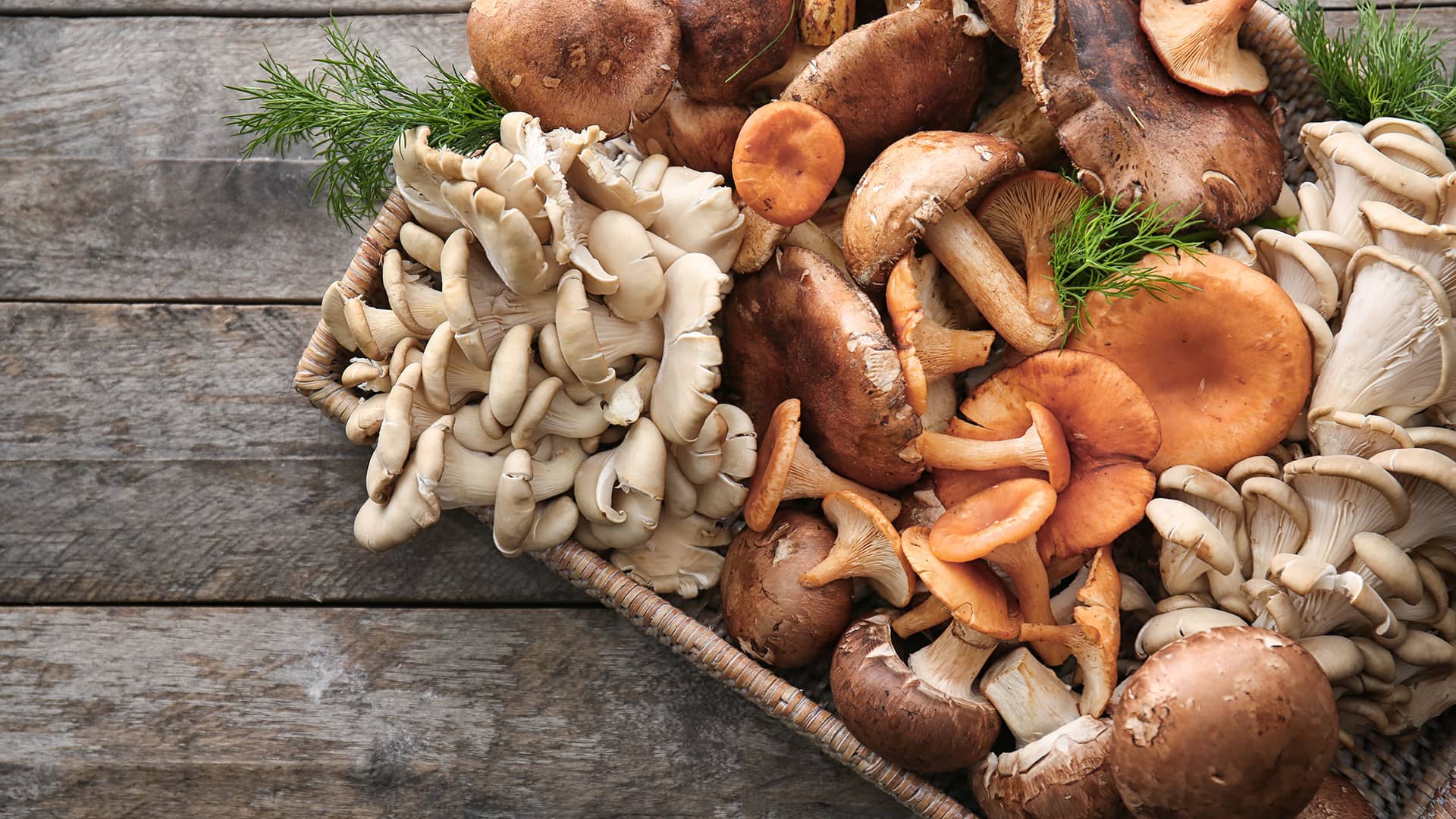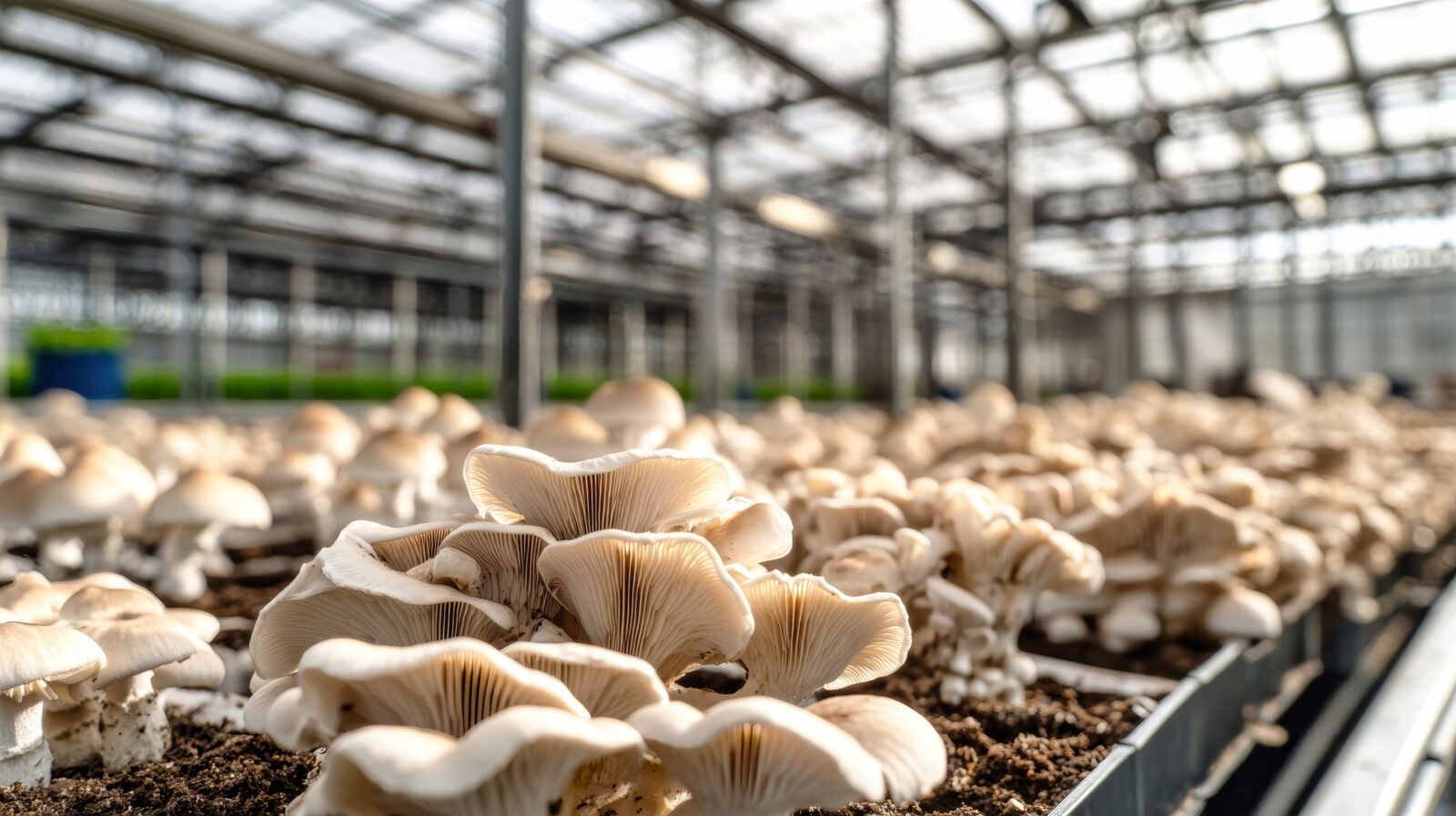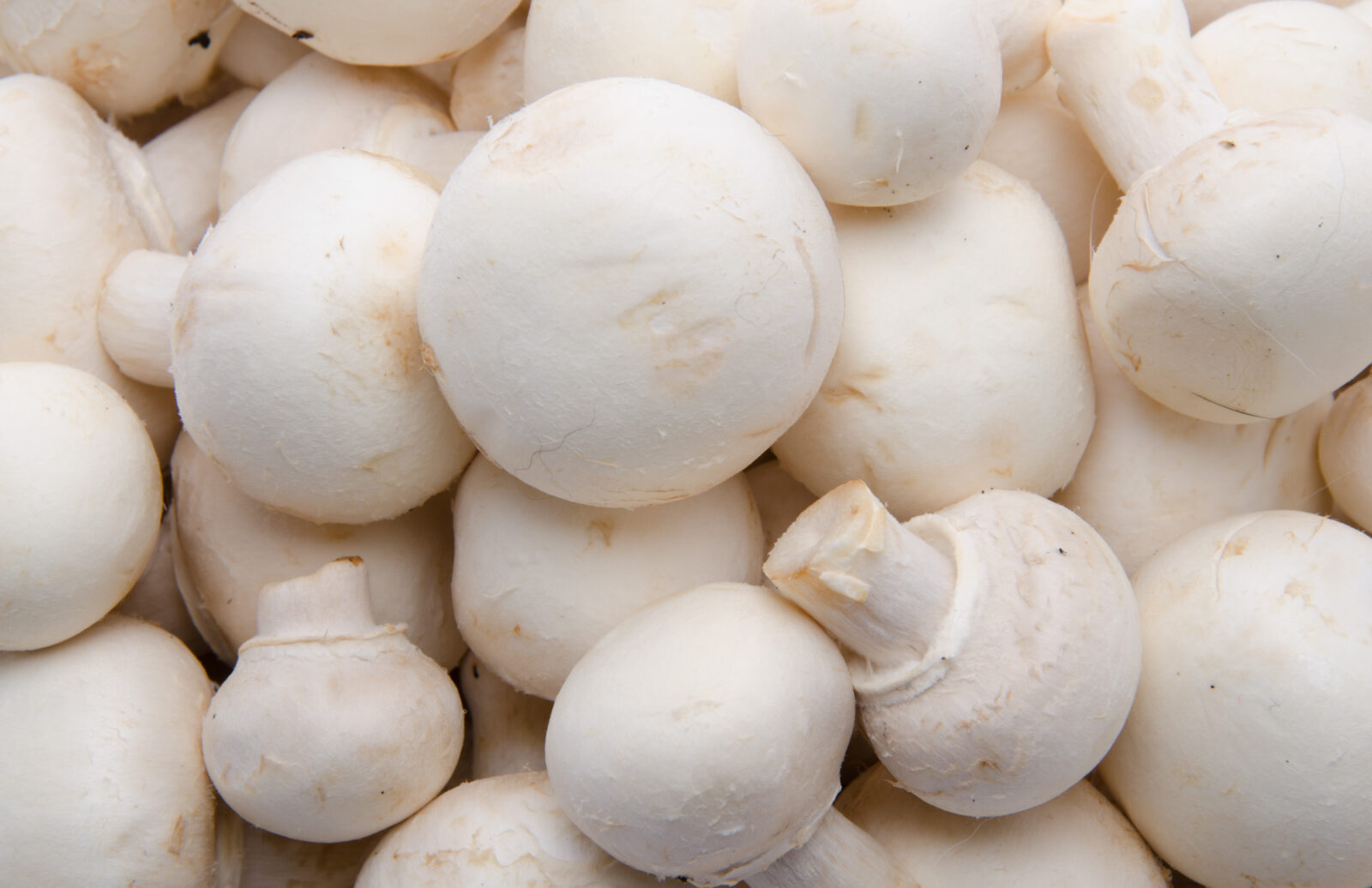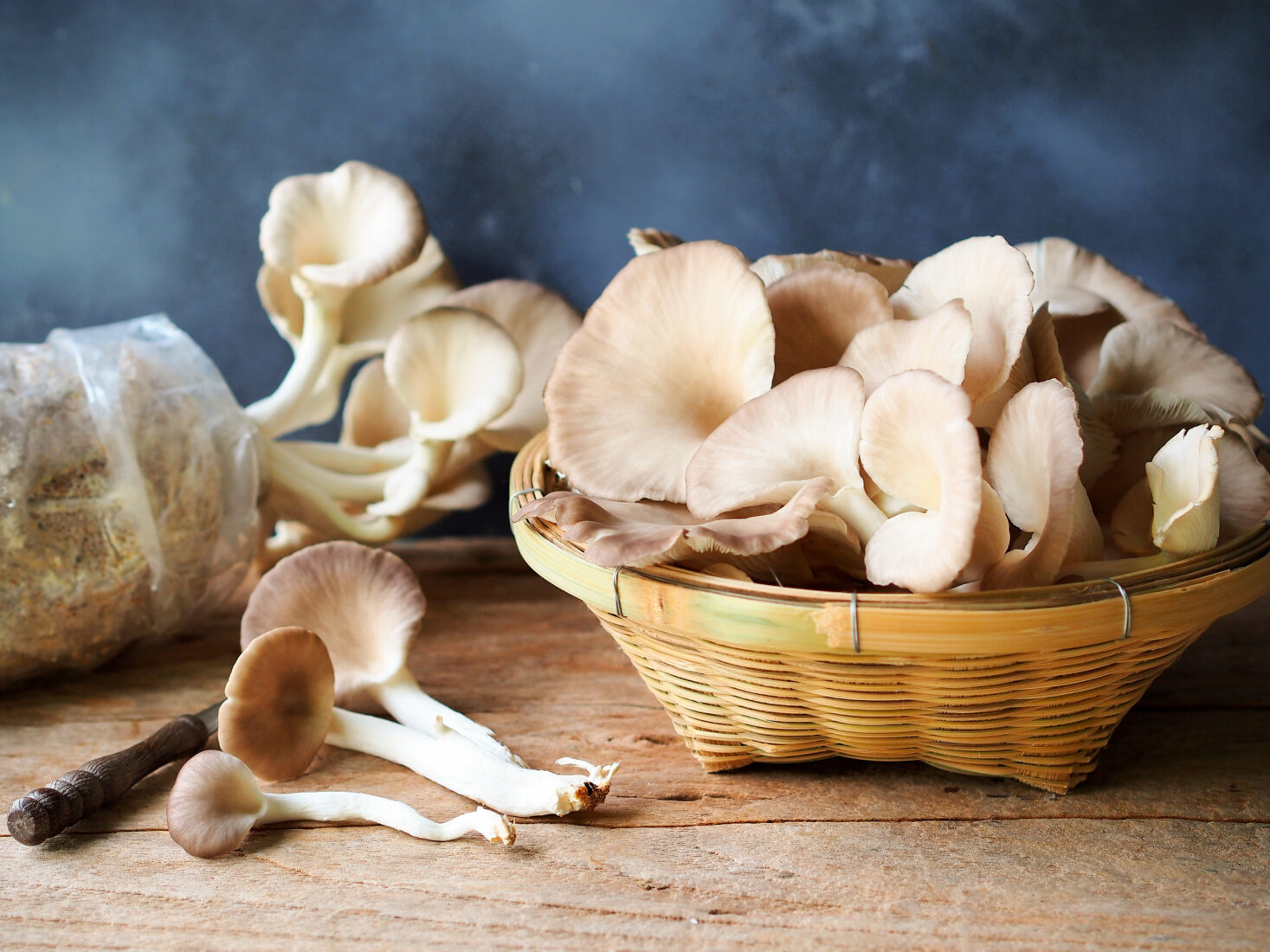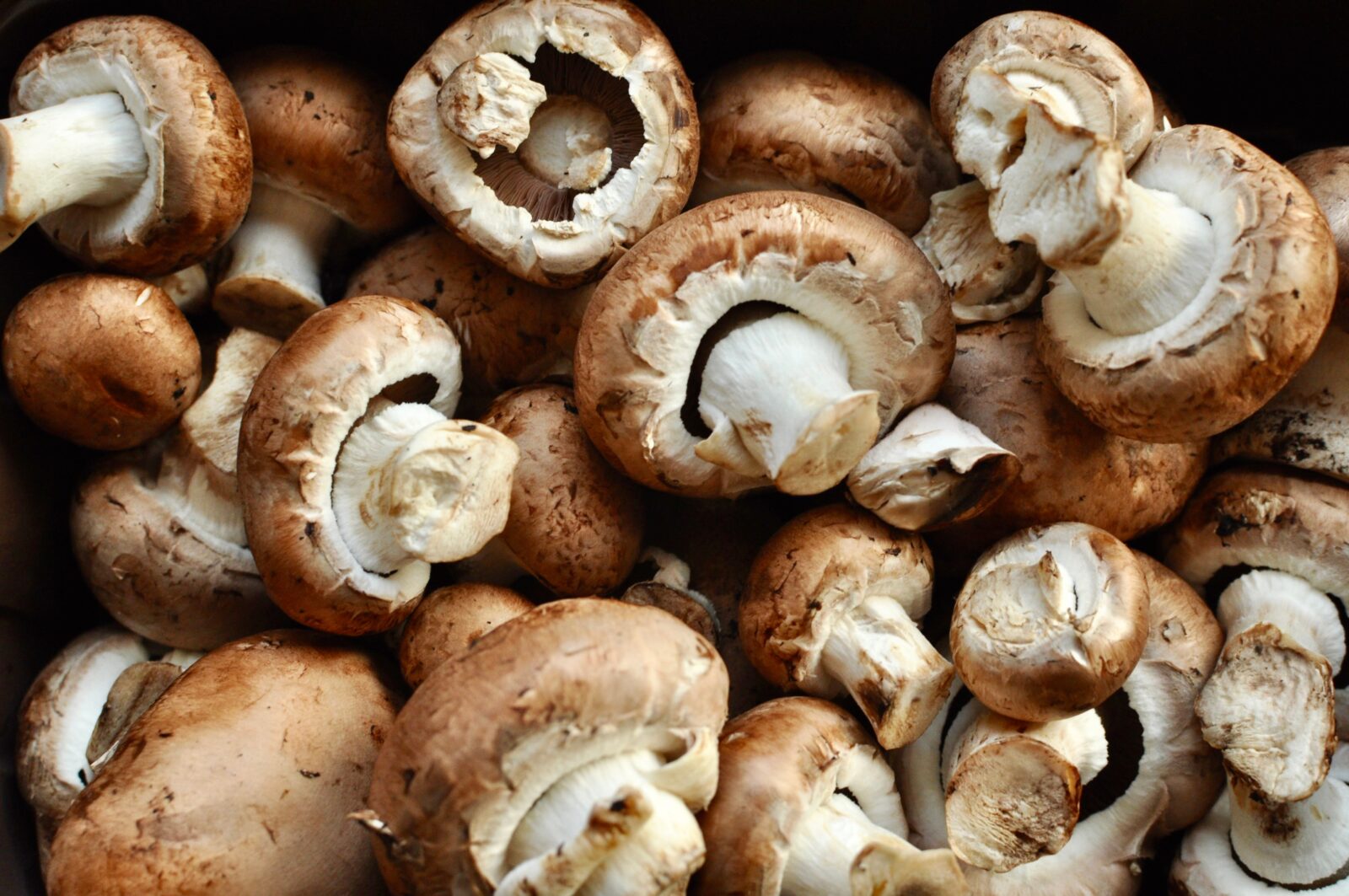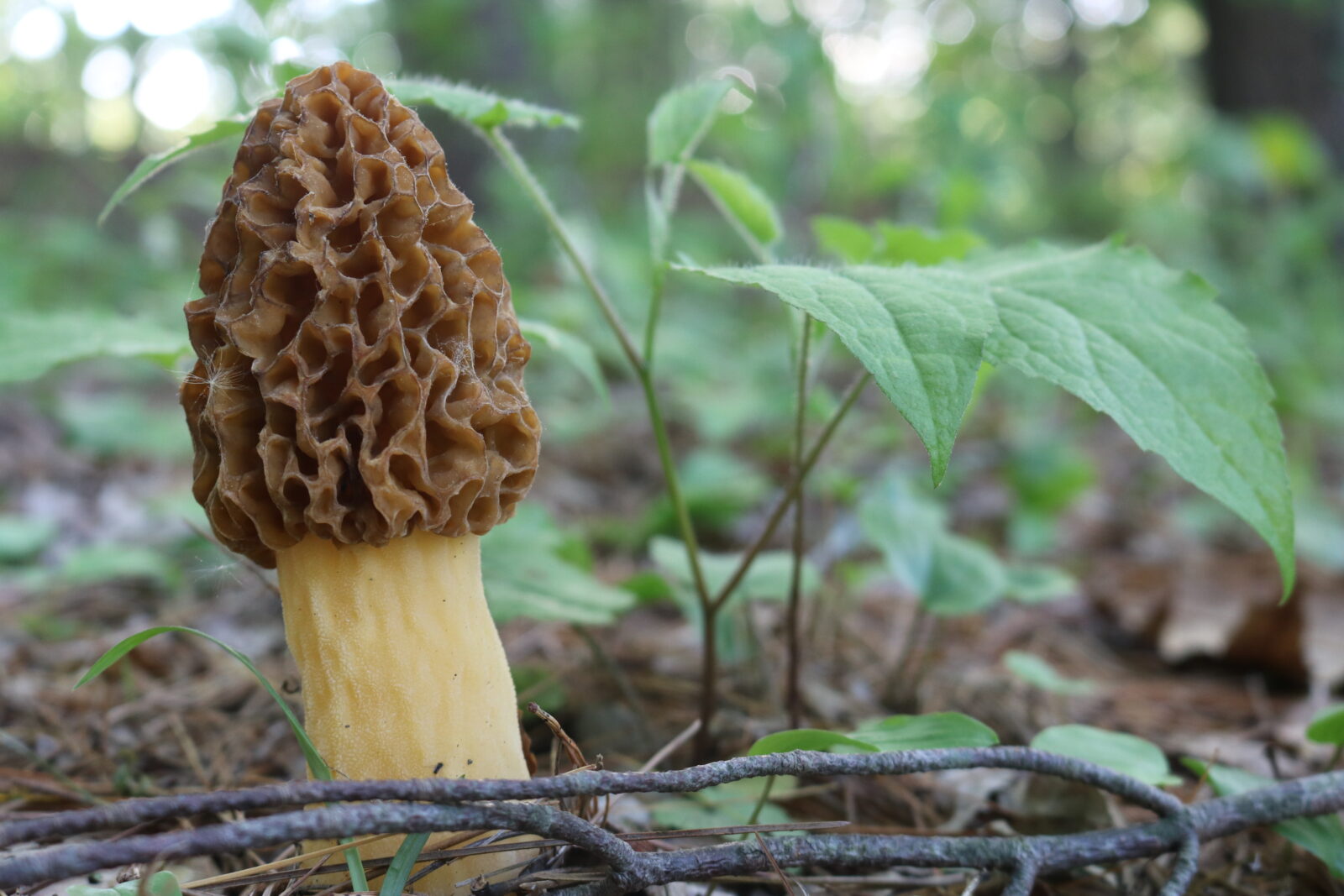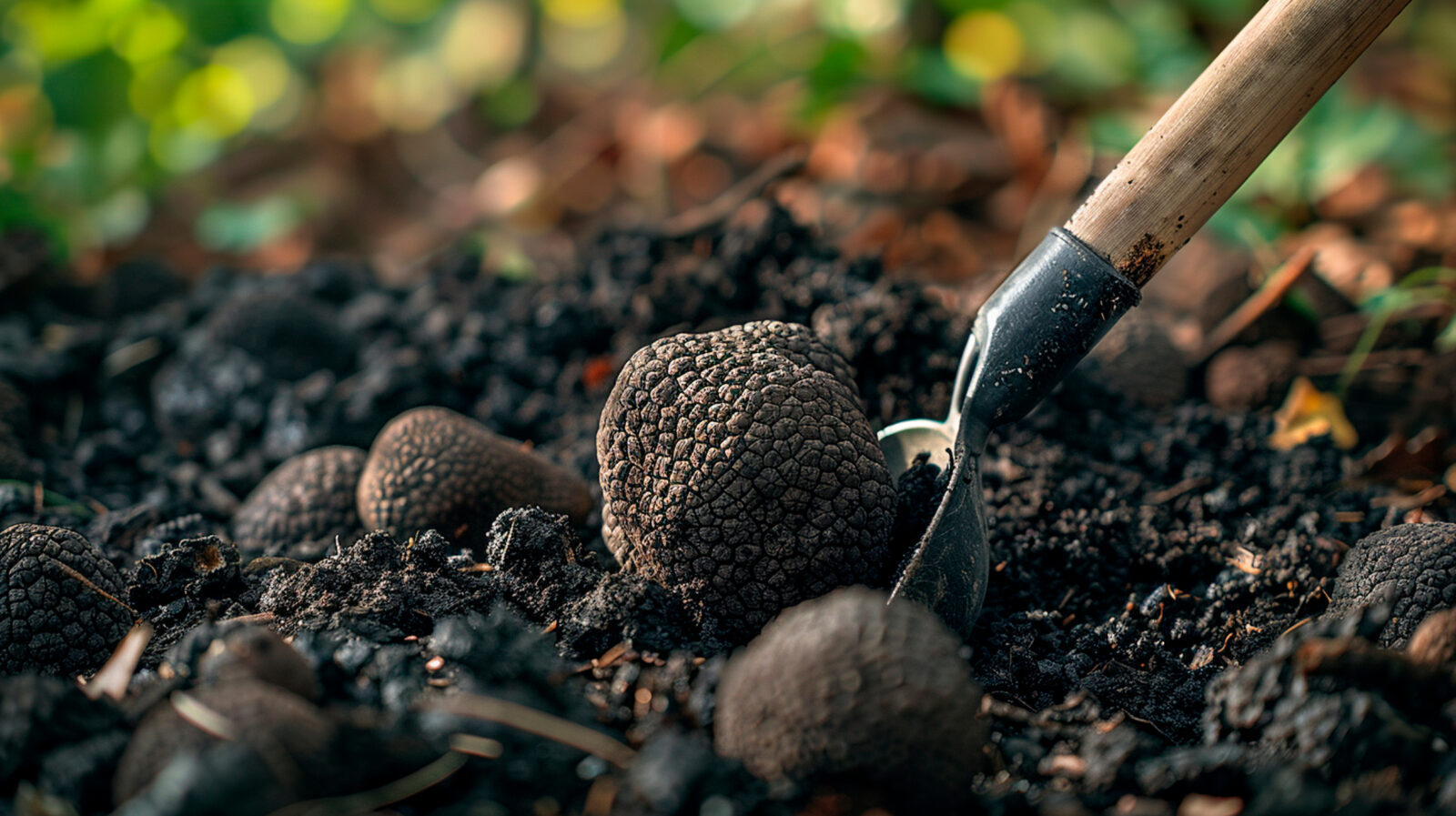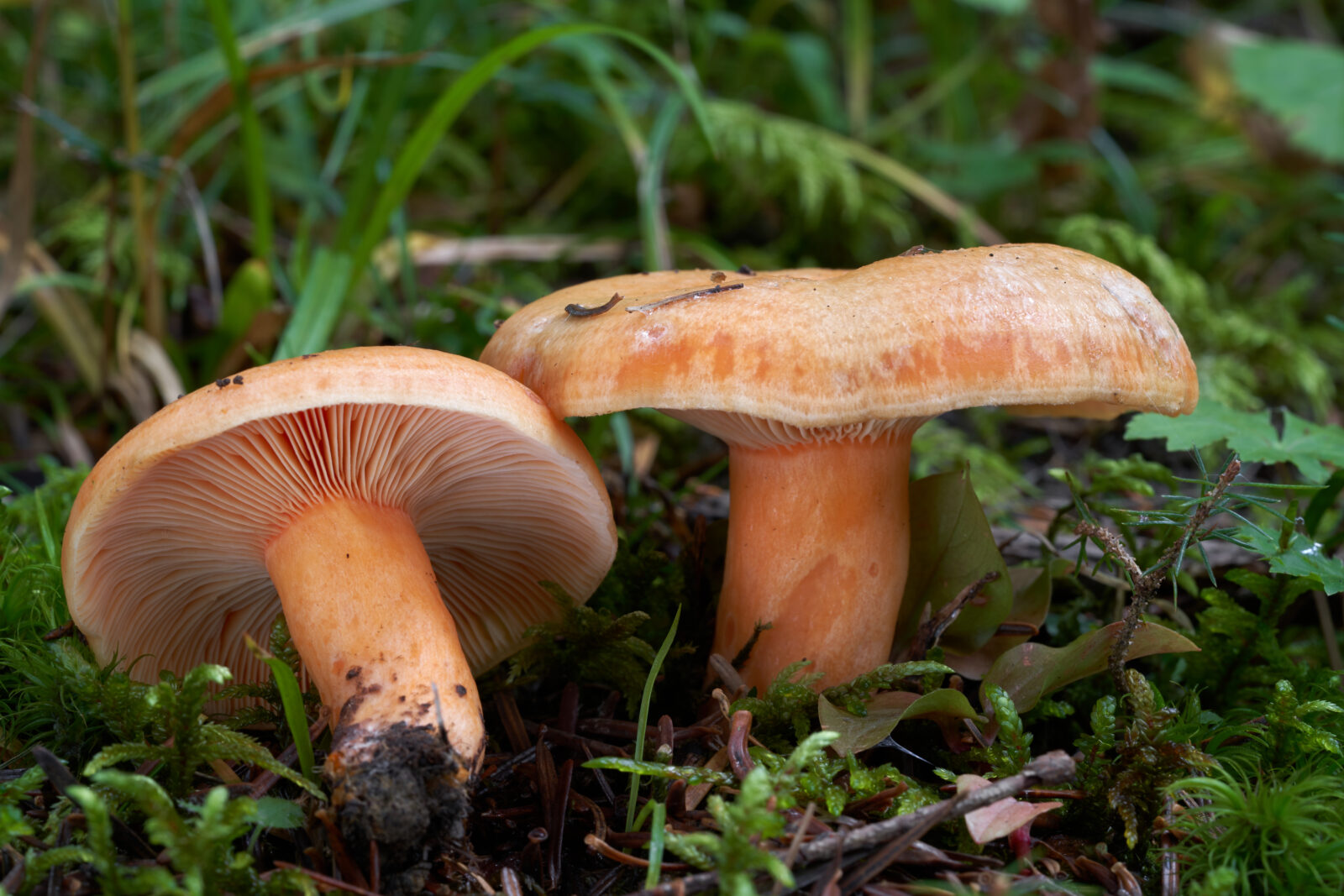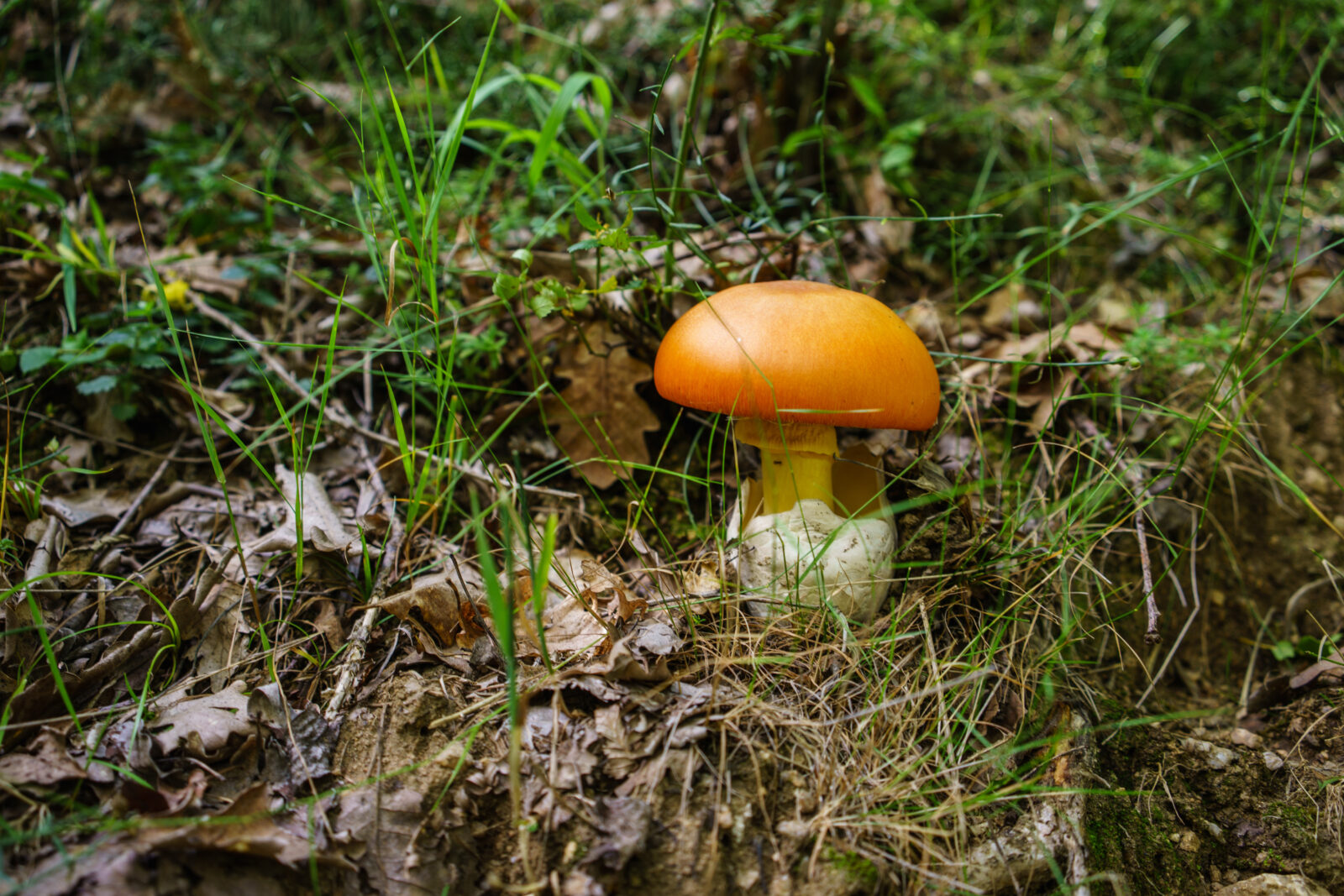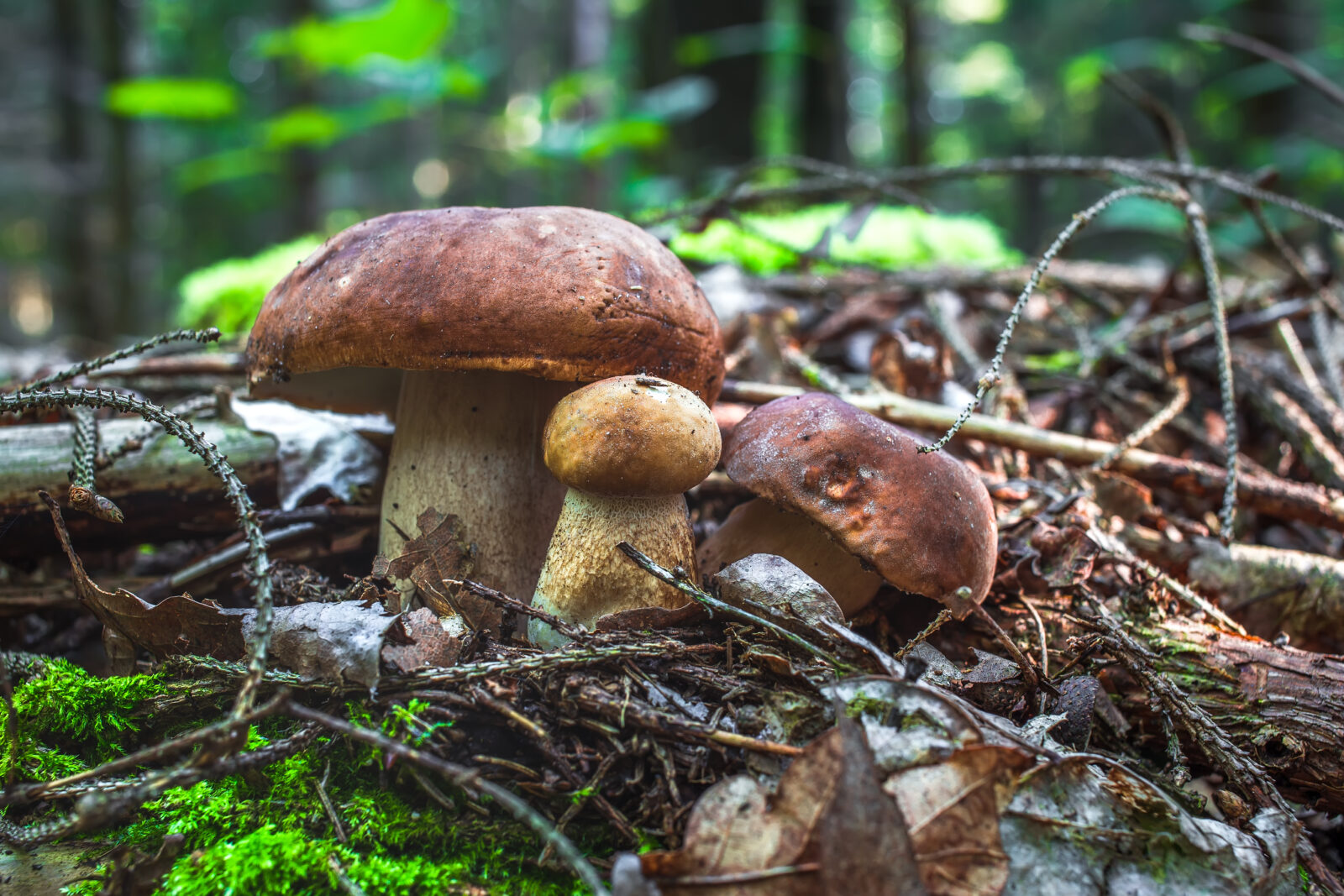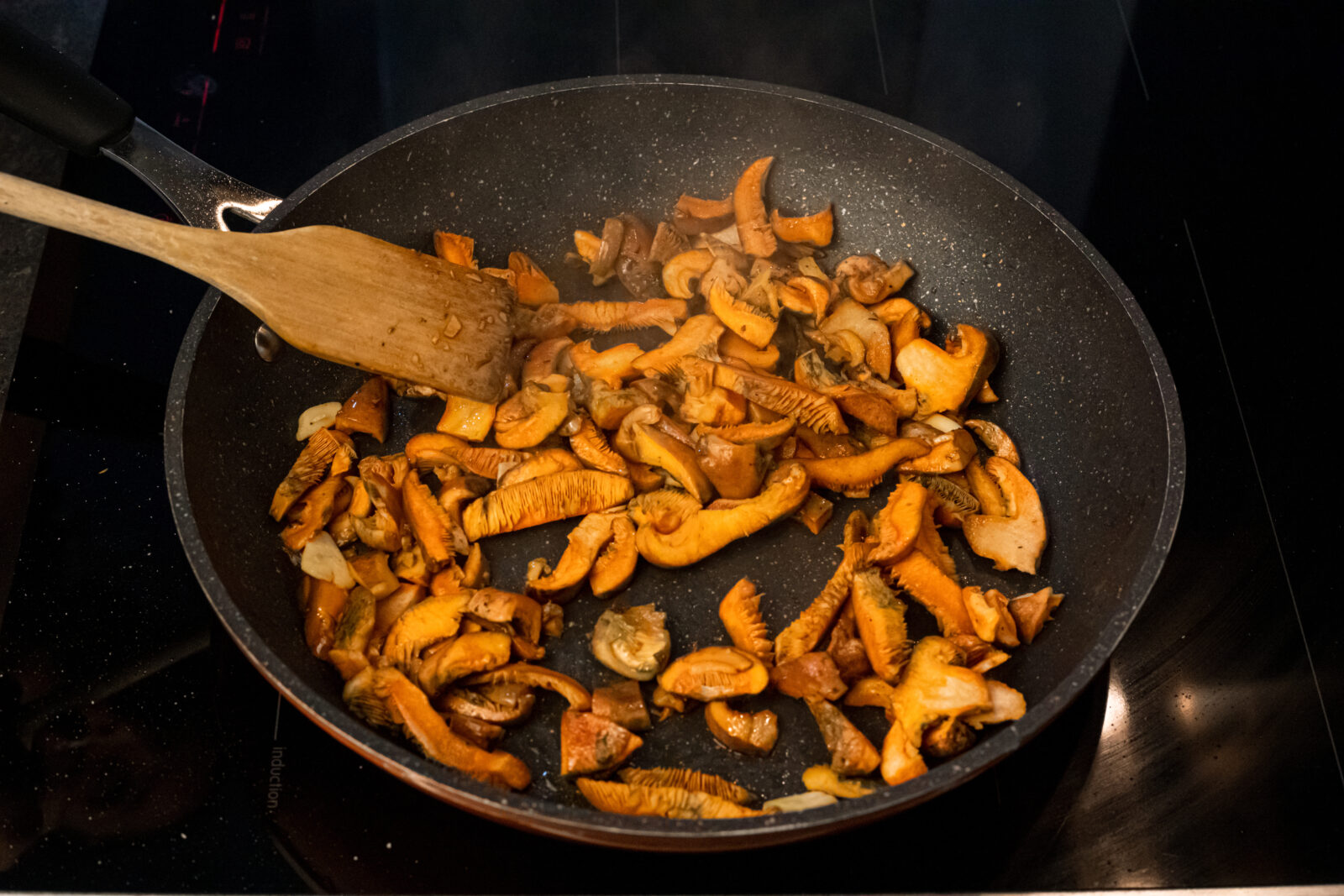Mushrooms, with tens of thousands of varieties worldwide, also have a rich presence in Türkiye. From their gastronomic significance to their health benefits and the many species grown in Türkiye, the mushroom world is vast and diverse.
Fascinating world of mushrooms
There are thousands of mushroom species across the globe, and new varieties continue to be discovered. The number of known mushroom species is constantly updated, with estimates ranging from 14,000 to 22,000.
However, only about 1% or 2% of these are edible. Thanks to the growing interest in mycology (the study of fungi), the identification and classification of new species is ongoing.
Vibrant oyster mushrooms thrive in a well-lit indoor farm with a backdrop of an industrial park for mushroom cultivation. (Adobe Stock Photo)
Industrial mushroom farming
While most mushroom species are naturally found in the wild, some are cultivated for industrial mushroom farming and sold commercially. Mushrooms come in various sizes, colors, shapes and flavor profiles.
While some are edible and gastronomically valuable, others are poisonous and should not be consumed.
Edible mushrooms found in Türkiye
Fresh button mushrooms. (Adobe Stock Photo)
1. Button mushroom (kultur mantari)
Perhaps the most common and widely available mushroom in Türkiye, the button mushroom is a staple in homes. From casseroles and soups to risottos, pastas, and sandwiches, this mushroom is the most accessible variety in the country.
lung oyster mushroom in bamboo basket on a rustic wooden table. (Adobe Stock Photo)
2. Oyster mushroom (Istiridye Mantari)
Typically found at the roots of broadleaf trees, the oyster mushroom is favored by vegans and vegetarians for its meaty taste and texture, often used as a plant-based alternative to meat.
A pile of earthy chestnut mushrooms. (Adobe Stock Photo)
3. Chestnut mushroom (kestane mantari)
As the name suggests, this mushroom is chestnut-brown in color and is known for its rich, flavorful taste.
Morel mushrooms on forest floor. (Adobe Stock Photo)
4. Morel mushroom (kuzugobegi mantari)
A popular edible mushroom, the morel comes in colors like white, grey, yellow, and brown, offering a versatile flavor profile.
Digging up truffle mushrooms in the forest. (Adobe Stock Photo)
5. Truffle mushroom (truf mantari)
Known for its rarity and expense, truffles are typically found at the roots of oak trees. While 45% of the world’s truffles come from France, 35% from Spain, and 20% from Italy, a small amount of truffles is also grown in Türkiye.
Lactarius mushrooms with salmon-colored cap and stem. (Adobe Stock Photo)
6. Lactarius mushroom (kanlica mantari)
Also known as melki or chintar mushroom, the lactarius mushroom is commonly found in the Western Black Sea region of Türkiye and is frequently used in local dishes.
Caesar's mushroom in the forest, Amanita caesarea, commonly known as Caesar's mushroom, is a highly regarded edible mushroom. (Adobe Stock Photo)
7. Caesar's mushroom (imparator mantari)
Recognized by its cone-shaped cap and orange color, the caesar's mushroom, also called the sultan mushroom or emperor mushroom, is easily identifiable.
Two large boletus in the forest, edible mushroom porcini. (Adobe Stock Photo)
8. Porcini mushroom (porcini mantari)
Also known as bear or bolete mushroom, the porcini mushroom, found in brown-red hues, is a favorite for soups and sautes, particularly during the summer and autumn seasons.
Cooking at home, Lactarius mushrooms with garlic. (Adobe Stock Photo)
Culinary influence of mushrooms
Mushrooms hold a significant place in global cuisines, with their impact varying from culture to culture.
- Flavor and aroma: Mushrooms add a rich, unique flavor to dishes, thanks to the diverse taste profiles of different species. Some mushrooms have a meaty, creamy texture, while others have lighter and distinct aromatic profiles.
- Nutritional value: Mushrooms are rich in fiber, protein, vitamins and minerals. They are particularly high in B vitamins, iron, potassium, and zinc, making them a nutritious food choice.
- Compatibility with other foods: Mushrooms pair beautifully with plant-based dishes, vegetables, grains like pasta and rice, sauces, and other ingredients, creating a variety of flavorful meals.
- Universal usage: Mushrooms are widely used in kitchens across the world, appearing in numerous recipes and food cultures.
- Meat alternative: For vegans and vegetarians, mushrooms serve as an excellent alternative to meat. Their meaty texture and flavor can replicate that of meat or poultry when paired with the right seasonings and cooking methods.
- Variety: With hundreds of edible mushroom species, each offering unique flavors and cooking potentials, the variety of mushrooms allows for different tastes and culinary experiences in every dish.
Expert scientists test and develop golden yellow cordyceps in the laboratory with care. (Adobe Stock Photo)
Health benefits of mushrooms
The reasons to include mushrooms in your diet go beyond their delicious taste—these fungi offer numerous health benefits.
- Low in calories, rich in nutrients: Mushrooms are low-calorie, nutrient-dense foods. They provide essential nutrients like fiber, protein, B vitamins (B2, B3, B5, B6), iron, zinc, and potassium.
- Boosting the immune system: Mushrooms are packed with antioxidants and polysaccharides that help strengthen the immune system. These components fight free radicals in the body, protecting cells from damage.
- Digestive health support: Mushrooms contain prebiotic fibers that support the growth of beneficial probiotic bacteria in the gut, promoting digestive health.
- Lowering cholesterol levels: Mushrooms contain beta-glucans and other fibers that help lower cholesterol levels while supporting heart health.
- Strengthening bone health: Mushrooms provide minerals like calcium, magnesium, and phosphorus, which help maintain and strengthen bones.
- Regulating blood sugar: With their low glycemic index, mushrooms can help regulate blood sugar levels, making them a suitable choice for those managing their blood sugar.
- Iron-rich superfood: Particularly meaty mushroom varieties are rich in iron, which plays a crucial role in red blood cell production and oxygen transport in the body.
These health benefits can be achieved when mushrooms are properly prepared and consumed. When included in a balanced diet, mushrooms offer a diverse and nutritious option.
However, it’s important to distinguish edible mushrooms from toxic varieties, so ensure you gather them from reliable sources when foraging or purchasing.
Mushrooms are a versatile, nutrient-rich food, offering significant health benefits while enhancing the flavor of countless dishes. Whether for their rich taste, culinary flexibility, or health-promoting properties, mushrooms deserve a place in any kitchen. In Türkiye, a country rich in mushroom diversity, the opportunities to explore and enjoy these fascinating fungi are plentiful.
May 08, 2025 12:12 PM GMT+03:00
